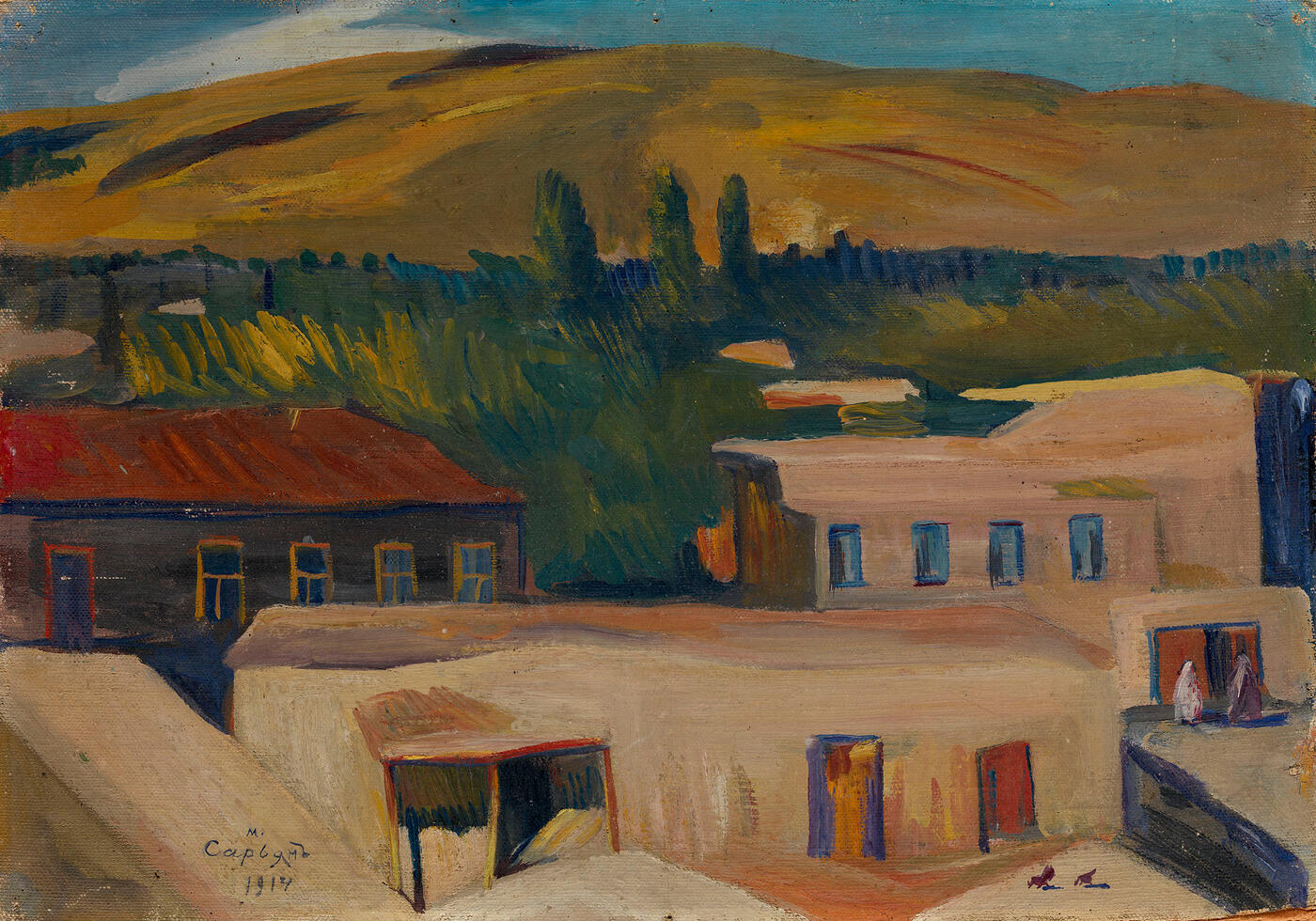MacDougall's Russian Art Auctions 27-30 May 2012
27 May 2012

* 151. SARYAN, MARTIROS (1880-1972)
Erivan, signed and dated 1914.
Oil on canvas, laid on cardboard, 33 by 47 cm.
50,000–70,000 GBP
Provenance: Private collection, USA.
In June 1914 Martiros Saryan was in Erivan (as the Armenian capital was called in Russian until 1936). This we know from a letter to the celebrated Symbolist poet, art critic and artist Maximilian Voloshin: “At present I am in Erivan, [...] I intend to spend a week here and then head off deeper into the mountains and lose myself
for a while”. Working conditions were difficult, and after a week in Yerevan Saryan had produced only a few small studies. The Erivan Study in this catalogue is a rare and sui generis example from the artist’s career, differing from his other works of this period in the brilliance and richness of the palette. This study can be considered a precursor to “Saryan’s Armenia”. Here he has already identified all the basic motifs and compositional principles that will come
to typify his urban landscapes of the 1920s and 1930s.
Sunlight is reflected off the walls of flat-roofed houses and the turquoise sky is reflected in their windows. To the left, in the depths of the garden is a little house with a red roof, overshadowed on two sides by the walls of the surrounding buildings.
The low hill on the horizon is painted in broad, bold strokes. It is separated from the houses by gardens and three striking, pyramidshaped poplars, pin-pointing the highest point of the composition. Poplars were a characteristic element of urban landscapes in old Erivan. The crowns of the trees pictured here incline slightly to the left, while a small cloud is propelled from right to left by the
wind. In the foreground, with just a couple of brush-strokes Saryan portrays a cock and a hen. He injects life into his landscapes by introducing animals and people, and he does this masterfully. Here, in this instance he has added two figures walking on the flat roof of an outhouse whose movement is balanced by the slightly left-leaning crests of the trees. It seems the man, in wide,
oriental-style trousers and a hood, is walking in front, followed by the woman, wearing a white garment patterned in red, her mouth covered with a dark kerchief.
The picture is suffused with sunlight, it pleases the eye and lifts the spirits, creating a sense of total harmony between man and nature
– a feeling that is too little in evidence nowadays. The picture is of undoubted artistic value and of great significance.
Rouzan Saryan, Director of the Saryan House-Museum
Notes on symbols:
* Indicates 5% Import Duty Charge applies.
Ω Indicates 20% Import Duty Charge applies.
§ Indicates Artist's Resale Right applies.
† Indicates Standard VAT scheme applies, and the rate of 20% VAT will be charged on both hammer price and premium.